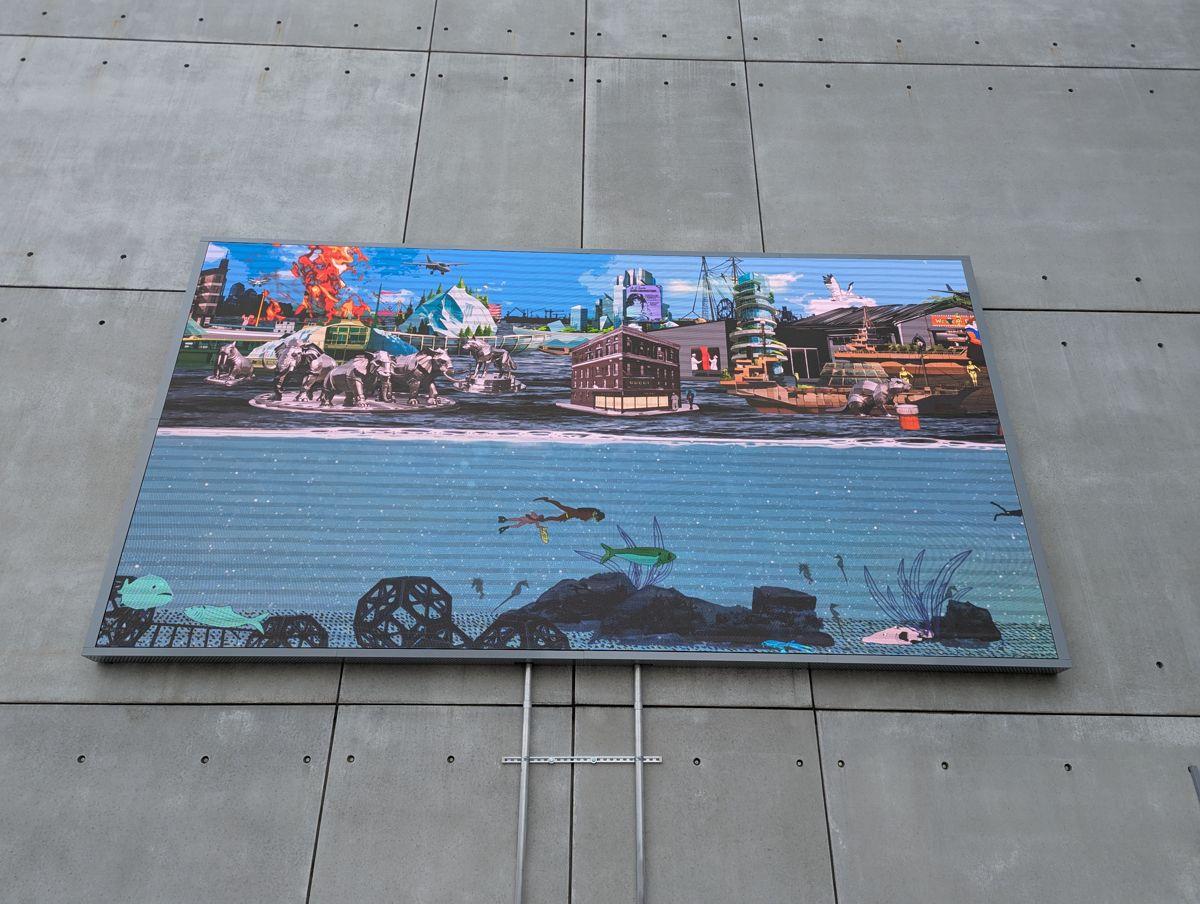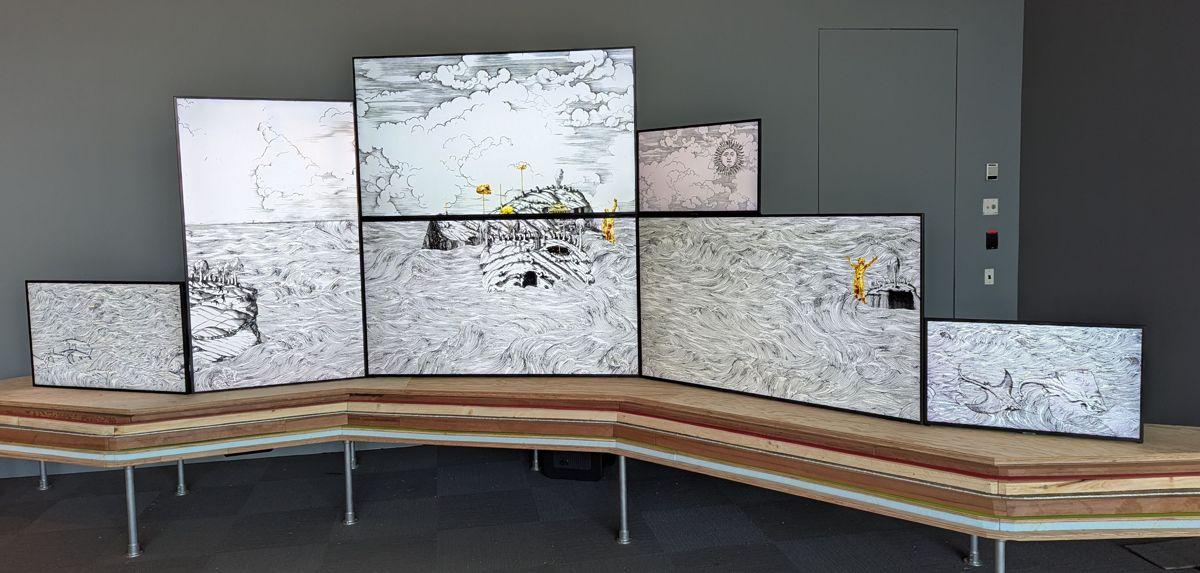I'm thrilled to share that py5 is now at The Whitney Museum of
American Art. This is one of the most well
known museums in the United States and it is an honor and a privilege to
show work here.
I collaborated with Marina Zurkow to create
two animated works. The first, The River is a Circle, was created as a
part of the Hyundai Terrace
Commission.

The other work, The Earth Eaters, is one of two works in Parting
Worlds.

The second work in Parting Worlds is
Wink, a piece that
Marina made with Adobe Flash many years ago.
Both The River is a Circle and The Earth Eaters use Processing and
py5. They are Processing Sketches with some Python code, using py5 as a
bridge to connect the two languages through py5's Processing
Mode.
Interestingly, both works have identical Java code. The differences are
in Python and in rather large Yaml configuration files. And the actual
image assets, of course. To create these works I wrote a shared reusable
framework with modular components that enable me to construct both works
in the same way that someone might make different things with the same
set of lego pieces. The Yaml configuration file is extensive, providing
a blueprint for how the image assets will animate and move around the
screen.
In addition, there is a lot of ancillary Python code that is not a part
of the final works but is necessary for the construction of them. A
useful analogy is to compare this to a building's construction: the
scaffolding, cranes, lifts, etc, are not a part of the final product but
are necessary to build a large structure. The Earth Eaters, for example,
employs over 100K image files and has a configuration file that is 86K
lines long. It is not possible for me to manage all of this manually.
Instead, there are custom Python tools that do much of the work for me.
Some of the programming techniques used had a lot in common with
py5generator, the code library that creates py5. Documenting that is a
job for another day.

